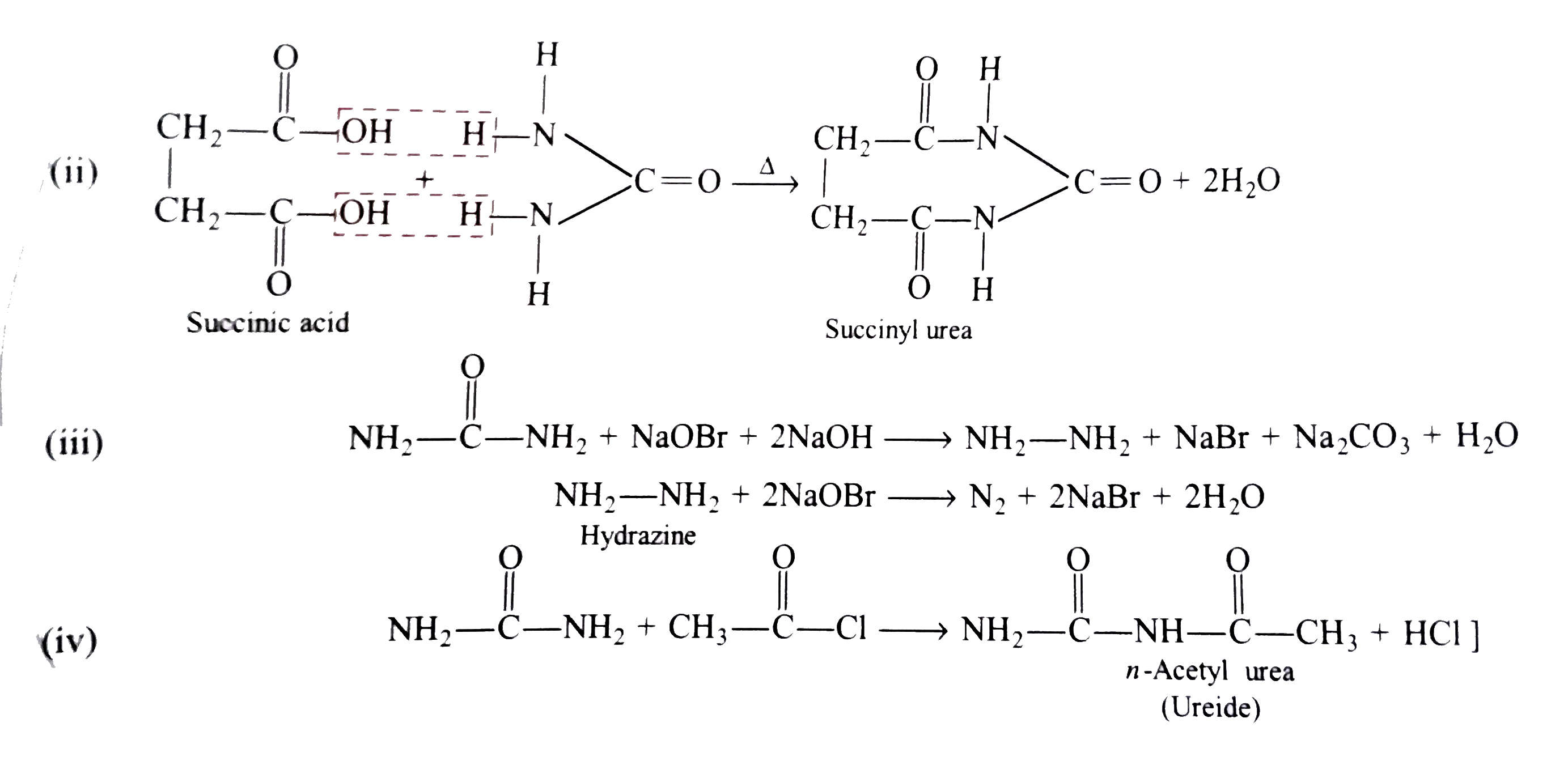What happens when?
(i) Urea is heated with acetoacetic ester,
(ii) Urea is heated with succinic acid
(iii) Urea is treated with sodium hypobromide in alkaline medium,
(iv) Urea is treated with acetyl chloride.
(i) Enolic form of acetoacetic ester reacts with urea to form methyl uracil,


Topper's Solved these Questions
- CARBOXYLIC ACIDS AND THEIR DERIVATIVESBOOK - OP TANDONCHAPTER - CARBOXYLIC ACIDS AND THEIR DERIVATIVESEXERCISE - Objective questions
498 Videos
- CARBOXYLIC ACIDS AND THEIR DERIVATIVESBOOK - OP TANDONCHAPTER - CARBOXYLIC ACIDS AND THEIR DERIVATIVESEXERCISE - Integer
4 Videos
- CARBOXYLIC ACIDS AND THEIR DERIVATIVESBOOK - OP TANDONCHAPTER - CARBOXYLIC ACIDS AND THEIR DERIVATIVESEXERCISE - Problem based on structure and properties
26 Videos
- BASIC PRINCIPLES OF ORGANIC COMPOUNDS (MECHANISM OF ORGANIC REACTIONS)BOOK - OP TANDONCHAPTER - BASIC PRINCIPLES OF ORGANIC COMPOUNDS (MECHANISM OF ORGANIC REACTIONS)EXERCISE - SINGLE INTEGER ANSWER TYPE QUESTIONS
4 Videos
- CHEMICAL KINETICSBOOK - OP TANDONCHAPTER - CHEMICAL KINETICSEXERCISE - LINKED COMPRESHENSION TYPE QUESTIONS ( SECTION-VI)
4 Videos
Similar Questions
What happens when?
(i) Acetamide is heated with bromine and caustic potash.
(ii) Acetyl chloride reacts with water.
(iii) Acetyl chloride is distilled with sodium acetate.
(iv) Acetamide reacts with nitrous acid.
(v) Acetamide reacts with phosphorus pentoxide.
(vi) Oils and fats are heated with NaOH.
(vii) Acetyl chloride reacts with ethyl alcohol.
(viii) Acetic acid is treated with P2O5 .
(ix) Urea is heated.
(x) Conc. HNO3 is added to concentrated urea solution.
(xi) Urea is heated with nitrous acid.
(xii) Urea is heated with sodium hydroxide solution.
(xiii) Urea is heated with acetyl chloride.
(xiv) The solution containing potassium cyanate and ammonium sulphate is evaporated to dryness.
(xv) Ammonia and carbon dioxide mixture is heated under pressure
View SolutionWhat happens when :
(i) Ethanol is treated with sodium ?
(ii) Ethanol is heated with conc. H2SO4 at 443K ?
View Solution
Knowledge Check
What happens when:
(i). Methyl chloride is treated with alcoholic KCN.
(ii). Ethyl chloride is treated with alcoholic KOH.
(iii). Chloroform is heated with Ag powder.AMethyl substituted chlorosilanes are formedBOnly Me4Si formedCPolymerised chains of (CH3)3SiCI are formedDsilicons are formed
What happens when malonic acid is heated with urea in presence of POCl3?
View SolutionWhat happens when ethanoic acid is treated with sodium carbonate ?
View SolutionWhat happens when :
(i) Sodium acetate is heated with soda lime
(ii) Malonic acid is heated
(iii) Calcium acetate is dry distilled
View SolutionWhat happens when ethanoic acid is treated with sodium bicarbonate ?
View SolutionWhat happens when:
(i). Methyl chloride is treated with alcoholic KCN.
(ii). Ethyl chloride is treated with alcoholic KOH.
(iii). Chloroform is heated with Ag powder.
View SolutionWhat happens when : (i) Ethyl chloride is treated with aqueous KOH ?
(ii) Methyl bromide is treated with sodium in the presence of dry ether?
View SolutionWhat happens when
(a) Butanone is treated with methylmagnesium bromide and then hydrolysed, and
(b) Sodium benzoate is heated with soda lime?
View Solution
